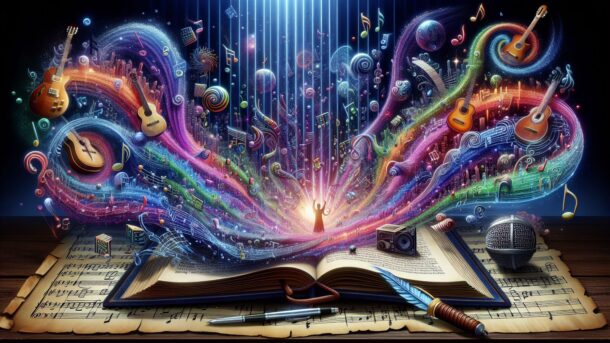olehova – Sound poetry is a unique form of poetic expression that focuses on the sonic elements of language rather than traditional literary techniques. In this article, we will explore the definition and overview of sound poetry as a poetic form, as well as the importance of sound and musicality in poetry.
Historical Background
Sound poetry has its origins in the early 20th century avant-garde movements, with artists experimenting with the possibilities of vocal sounds and non-linguistic vocalizations. We will delve into the evolution of sound poetry over time, tracing its development through influential poets and movements that have shaped the genre.
Origins of Sound Poetry
One of the earliest pioneers of sound poetry was the Italian Futurist Filippo Tommaso Marinetti, who sought to break free from traditional poetic conventions and embrace the dynamic energy of modern life. His “Zang Tumb Tumb” (1914) is a prime example of the cacophonous sound poetry that emerged during this period.
Evolution of Sound Poetry
Throughout the 20th century, sound poetry continued to evolve and diversify, with artists from various cultural backgrounds and artistic movements contributing to its rich tapestry. The Dadaists, for example, embraced sound poetry as a means of expressing their anarchic and absurdist worldview.
Influential Poets and Movements
From the Surrealists to the Beat poets, sound poetry has found resonance among artists who seek to push the boundaries of language and meaning. Figures such as Kurt Schwitters, Henri Chopin, and Jaap Blonk have left an indelible mark on the history of sound poetry with their innovative vocal explorations.
Sound Poetry in Lyrics
As sound poetry began to intersect with the world of music, a new form of artistic expression emerged: sound poetry in lyrics. Artists such as Laurie Anderson, Patti Smith, and Bjork have blended the rhythmic and sonic possibilities of sound poetry with the narrative depth of song lyrics, creating a hybrid form that defies categorization.
Examination of Lyrical Elements
In this section, we will examine the lyrical elements that define sound poetry in lyrics, from phonetic repetition and onomatopoeia to the use of nonsensical language and vocal improvisation. By studying the techniques employed by sound poets in their lyrical compositions, we can gain a deeper appreciation for the symbiotic relationship between language and music.
By delving into the world of sound poetry through lyrics and songs, we can appreciate the boundless creativity and expressiveness of human language. Whether spoken, sung, or whispered, sound poetry offers us a glimpse into the infinite possibilities of sound and meaning, inviting us to explore the outer reaches of our auditory imagination.
